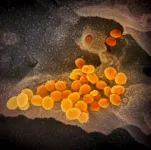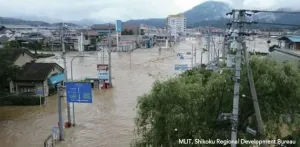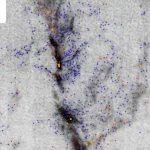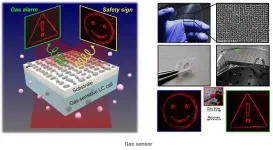(Press-News.org) If you are exposed to silica (quartz) dust at work - e.g. from working with concrete and granite - you have a greater risk of certain types of rheumatic disease. This is shown by results from Aarhus University and Aarhus University Hospital, which have just been published in the International Journal of Epidemiology.
Exposure to silica dust at work, which is the case especially at workplaces within construction and industry, may lead to autoimmune rheumatic diseases. Photo: Unsplash.
Exposure to silica dust at work, which is the case especially at workplaces within construction and industry, may lead to autoimmune rheumatic diseases. Photo: Unsplash.
As the research results from Aarhus University show, exposure to silica dust comes at a cost.
"Exposure to silica dust at work, which is the case especially at workplaces within construction and industry, may lead to autoimmune rheumatic diseases - even at low levels of exposure," says one of the researchers behind the largest study of its kind, Medical Doctor and PhD Signe Hjuler Boudigaard from Aarhus University and Aarhus University Hospital.
Silica dust is formed when flint, sandstone, granite and concrete are grinded or processed in other ways. Some of the dust consists of small particles which - when you inhale them - are carried right down into the smallest parts of the lungs. This so-called respirable dust accumulates in the lungs, where it causes an inflammatory reaction and activates the immune system.
The risk of rheumatic diseases increases
The researchers examined the association between exposure to silica dust and the rheumatic diseases systemic sclerosis, rheumatoid arthritis, lupus erythematosus and small vessel vasculitis, which is a chronic inflammation of the small blood vessels.
They found that the risk of autoimmune rheumatic diseases increased with increasing exposure levels of silica dust. The risk for persons with the highest exposure was one-and-a-half times greater compared to non-exposed people.
The survey comprised 1,541,505 men and 1,470,769 women from the Danish labour force from 1979 to 2015. A total of 17,000 were diagnosed with one of these autoimmune diseases,
and of these, 1,490 had been exposed to silica dust at work. The study shows a clear association between level of exposure to silica dust at work and autoimmune rheumatic disorders, most clearly for systemic sclerosis and rheumatoid arthritis.
"The most important competing factor is tobacco smoking. We accounted for smoking and there was still an association between silica exposure and autoimmune rheumatic diseases. We know that smoking is not randomly distributed in the population, so it was important to take this into account," says Henrik Kolstad, professor at Aarhus University and Aarhus University Hospital and continues:
"In Denmark and Europe, the occupational exposure limit for silica dust is twice the limit in the USA. It's therefore clearly relevant to include our findings when reviewing the current Danish occupational exposure limit"
The next step is to examine whether exposure to silica dust leads to increased levels of antibodies specific for autoimmune rheumatic diseases. According to Henrik Kolstad, the purpose of these studies is to substantiate the causal relationship and gain insight into the possible causal mechanisms.
INFORMATION:
Background for the results
Cohort study of the total Danish labour force from 1979 to 2015.
The study was carried out in collaboration between Aarhus University, Department of Occupational Medicine, Aarhus University Hospital, Department of Rheumatology, Gothenburg University in Sweden and Utrecht University in the Netherlands.
The study is financed by the Danish Working Environment Research Fund, Aarhus University and Deutsche Gesetzliche Unfallversicherung.
The scientific article is published in the International Journal of Epidemiology
Contact
Signe Hjuler Boudigaard
Aarhus University, Department of Clinical Medicine and
Aarhus University Hospital, Occupational Medicine
sigkrt@rm.dk
Henrik Kolstad
Aarhus University, Department of Clinical Medicine and
Aarhus University Hospital, Occupational Medicine
kolstad@clin.au.dk
M: (+45) 2961 0359
The leading newspapers in two nuclear waste management forerunner countries, Finland and France, fulfil their "watchdog" roles in highly distinct ways. The Finnish Helsingin Sanomat (HS) tends to reproduce government and industry framings, whereas Le Monde cherishes its role as an independent critic of the powers that be. These differences reflect distinct cultural, political and media traditions in the two countries.
"The critical watchdog model works in a liberal democracy such as the French, based on mistrust towards the governing elites. But would it backfire in Finland by undermining the very institutional trust that the Nordic democracies have been built upon throughout history?" asks the first author of the article, Research Fellow Markku Lehtonen from the Department of Humanities ...
A new study has shown that underweight and overweight women are at a significantly higher risk of experiencing recurrent miscarriages compared to those of average weight.
A research team led by the University of Southampton assessed the link between women's lifestyle and risk of recurrent pregnancy loss, defined as women having two or more consecutive early miscarriages. The systematic review and meta-analysis study has been published in the journal Scientific Reports.
Miscarriage is the most common complication of early pregnancy, affecting 15 - 20% of all pregnancies. Recurrent pregnancy loss is a complex disease and although often attributed to numerous medical factors and lifestyle influences, the cause is deemed "unexplained" ...
Tokyo, Japan - Leukemias are debilitating cancers of the hematopoietic or blood-forming cells of the bone marrow. Now, researchers at Tokyo Medical and Dental University (TMDU) describe an ingenious strategy against chronic myelomonocytic leukemia (CMML) wherein an antibody-drug conjugate (ADC) comprising a cytotoxic drug payload linked to an antibody that selectively targets specific cell lines effectively blocks malignant cell proliferation at source.
Hematopoietic stem and progenitor cells (HSPCs) continually differentiate into the entire panoply of blood cells, as many as 500 ...
Since fast radio bursts (FRBs) were first discovered over a decade ago, scientists have puzzled over what could be generating these intense flashes of radio waves from outside of our galaxy. In a gradual process of elimination, the field of possible explanations has narrowed as new pieces of information are gathered about FRBs - how long they last, the frequencies of the radio waves detected, and so on.
Now, a team led by McGill University researchers and members of Canada's CHIME Fast Radio Burst collaboration has established that FRBs include radio waves at frequencies lower than ever detected before, a discovery that redraws the boundaries for theoretical astrophysicists trying to put their finger on the source of FRBs.
"We ...
WHAT:
The experimental antiviral drug MK-4482 significantly decreased levels of virus and disease damage in the lungs of hamsters treated for SARS-CoV-2 infection, according to a new study from National Institutes of Health scientists. SARS-CoV-2 is the virus that causes COVID-19. MK-4482, delivered orally, is now in human clinical trials. Remdesivir, an antiviral drug already approved by the U.S. Food and Drug Administration for use against COVID-19, must be provided intravenously, making its use primarily limited to clinical settings.
In their study, published in the journal ...
Artificial intelligence (AI) has sped up the process of detecting flooded buildings immediately after a large-scale flood, allowing emergency personnel to direct their efforts efficiently. Now, a research group from Tohoku University has created a machine learning (ML) model that uses news media photos to identify flooded buildings accurately within 24 hours of the disaster.
Their research was published in the journal Remote Sensing on April 5, 2021.
"Our model demonstrates how the rapid reporting of news media can speed up and increase the accuracy of damage mapping activities, accelerating ...
Collaborative research of the University of Jyvaskyla and Natural Research Institute Finland presents new evidence of the effects of enriched rearing on well-being of aquaculture fishes. The research demonstrates that stone enrichments that have been previously conditioned in lake water significantly improve survival of fish compared to clean stones. Also a higher number of stones has a similar positive effect. The results have practical implications for prevention of aquaculture diseases. The study was published in Antibiotics in March 2021.
The volume of aquaculture is continuously increasing. Parasitic diseases represent a significant threat to farmed fishes and ecological solutions to minimize use of medication are being sought.
Enriched rearing, where rearing tanks ...
A survey of star formation activity in the Orion Nebula Cluster found similar mass distributions for newborn stars and dense gas cores, which may evolve into stars. Counterintuitively, this means that the amount of gas a core accretes as it develops, and not the initial mass of the core, is the key factor in deciding the final mass of the produced star.
The Universe is populated with stars of various masses. Dense cores in clouds of interstellar gas collapse under their own gravity to form stars, but what determines the final mass of the star remains an ...
Academic medical centers continuously strive to enhance patient care. One of the major mechanisms to improve patient health outcomes is through translational research - bringing research breakthroughs from the lab to patients via clinical trials. Making clinical trials more efficient, and ultimately more successful, would significantly advance patient care. However, fragmentation of the relevant data necessary to implement improvements to translational science is a significant barrier.
While some bioinformatic tools have attempted to address this problem, they often lacked the ability to assess the efficiency of translational science. ...
Gas accidents such as toxic gas leakage in factories, carbon monoxide leakage of boilers, or toxic gas suffocation during manhole cleaning continue to claim lives and cause injuries. Developing a sensor that can quickly detect toxic gases or biochemicals is still an important issue in public health, environmental monitoring, and military sectors. Recently, a research team at POSTECH has developed an inexpensive, ultra-compact wearable hologram sensor that immediately notifies the user of volatile gas detection.
A joint research team led by Professor Junsuk Rho of departments of mechanical and chemical engineering and Dr. Inki Kim of Department of Mechanical ...







